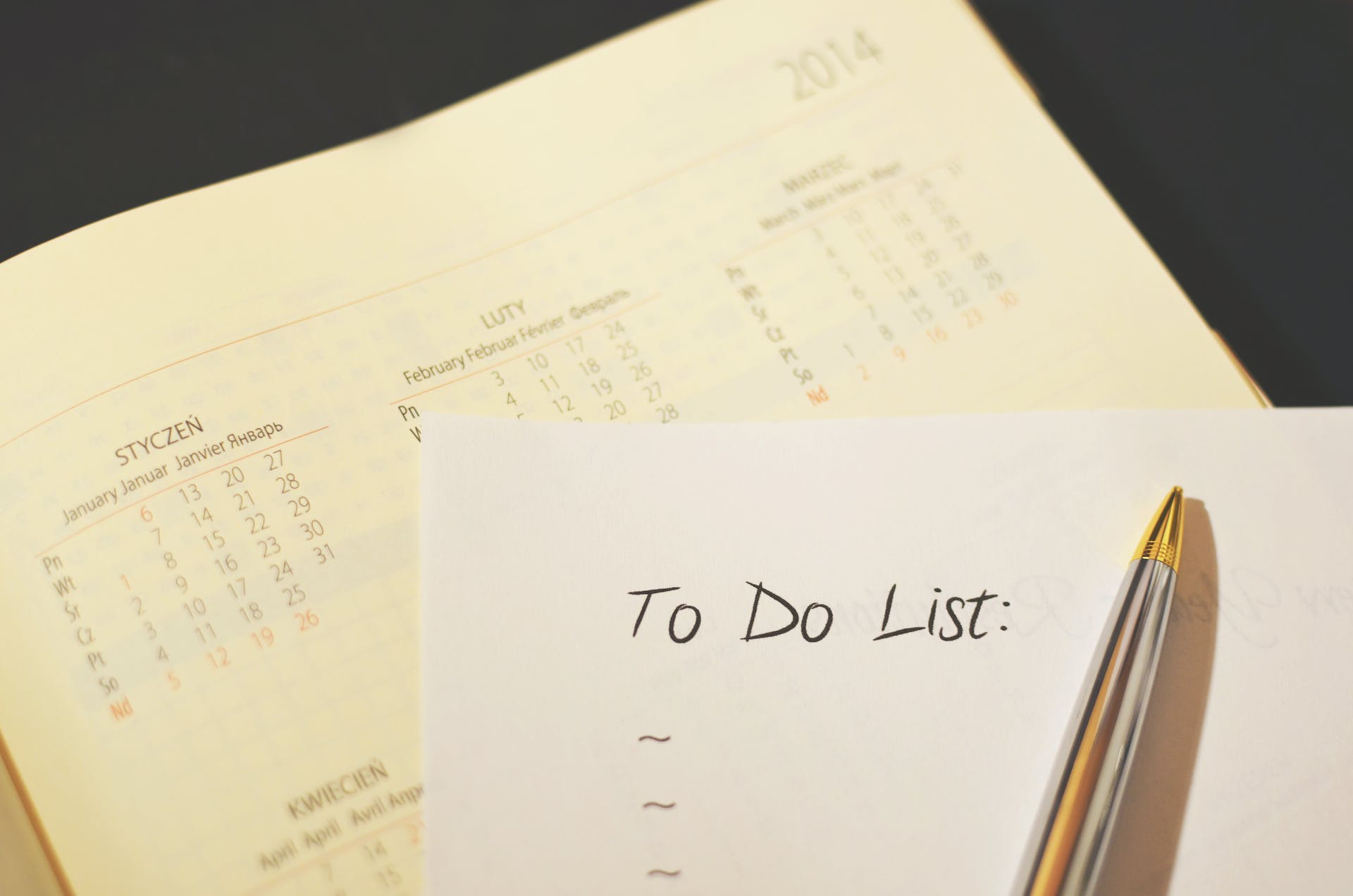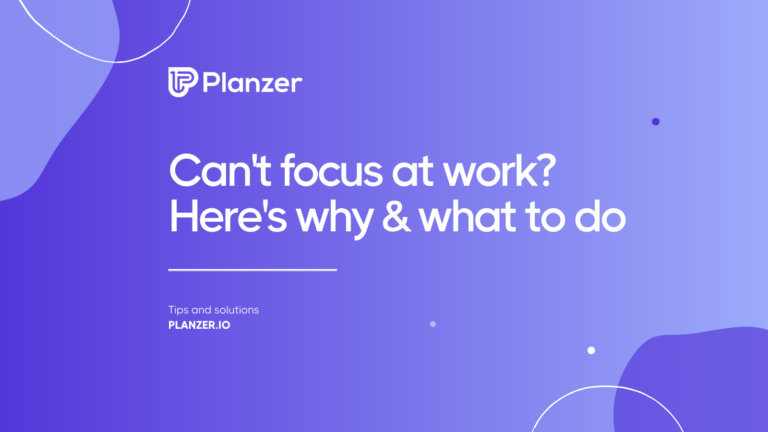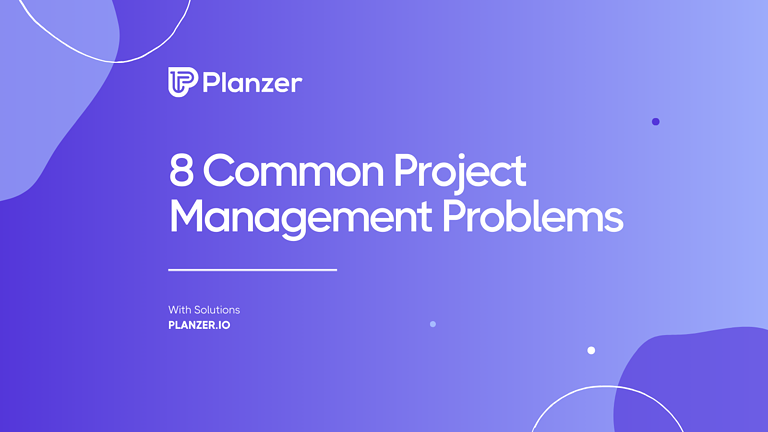If you have ADHD, you are probably familiar with the frustration of having too many thoughts and tasks to handle at once. This can lead to a lack of focus and productivity, making it difficult to get things done.
One way to combat this is by using an ADHD To-Do List. In this blog, we will explore what these lists are, their benefits and downsides, and how they can be used to prioritize and organize your tasks.
We will also provide solutions for building stress-free To-Do Lists that work for you and strategies for sticking to them.
With the help of Planzer.io, a personalized task management platform designed specifically for people with ADHD, you can finally start achieving your goals without feeling overwhelmed or stressed out. Let’s dive into some tips that will help you prioritize and organize your life in the best way for you!
Understanding ADHD To-Do Lists

ADHD can make it challenging to prioritize and stay organized. To-do lists are an excellent tool for individuals with ADHD to manage their tasks effectively.
It is essential to break down larger tasks into smaller, more manageable steps that are easier to complete. Prioritizing tasks based on urgency and importance will ensure that the most critical tasks are completed first.
Individuals with ADHD may find it helpful to use tools such as calendar reminders or task management apps to help them stay organized and on track. With proper planning and organization, individuals with ADHD can reduce stress levels and accomplish their goals efficiently.
What is an ADHD To-Do List?
An ADHD to-do list is a tool designed to help individuals with ADHD manage their tasks and responsibilities. These lists can be either written or digital and should include specific tasks, deadlines, and priorities.
Individuals with ADHD may find it helpful to break down larger tasks into smaller, more manageable steps. Prioritizing tasks based on importance and urgency can also be helpful in managing symptoms. This approach allows individuals with ADHD to focus on completing high-priority tasks first.
Regularly reviewing and updating the to-do list can help individuals stay on track and avoid feeling overwhelmed. By using an ADHD to-do list, individuals can gain a sense of control over their responsibilities and improve their ability to meet deadlines and complete tasks efficiently.
Benefits of using To-Do Lists for ADHD
For individuals with ADHD, to-do lists can be a helpful tool for managing time and getting tasks done more efficiently. To-do lists have several benefits for those with ADHD, including breaking down larger tasks into smaller, more manageable steps and providing a visual reminder of what needs to be done.
Prioritizing tasks is crucial when creating a to-do list, as it helps individuals focus on the most critical and urgent items first. Overloading the list with too many items can lead to feelings of overwhelm and anxious. Tools such as colour coding or numbering can also aid in organization and prioritization.
Overall, using a to-do list can be an effective strategy for those with ADHD who struggle with time management and task completion. By breaking down tasks into manageable steps and prioritizing them based on urgency and importance, individuals can feel more in control of their daily responsibilities.
Downsides of using To-Do Lists for ADHD
To-Do lists can be helpful for individuals with ADHD to manage their symptoms, but they also have some potential downsides.
Some people with ADHD may struggle with prioritization and become overwhelmed by the number of items on their list. It’s essential to break down larger tasks into smaller, more manageable steps in order to avoid feeling overwhelmed and make progress.
Setting realistic deadlines and using visual aids such as colour coding or numbering can help with organization and prioritization.
Finding a system that works best for you is essential, as everyone’s needs and preferences are different. For some, paper To-Do lists may be effective, while others may prefer electronic options.
Additionally, finding the right balance between structure and flexibility is crucial. While too much structure may feel restrictive, too little can lead to disorganization and decreased productivity.
With some trial and error, individuals with ADHD can find a method that suits their unique needs and helps them stay focused and productive.
Prioritizing and Organizing Tasks for ADHD

For people with ADHD, organizing and prioritizing tasks can be challenging task. Using a to-do list to keep track of what needs to be done is extremely helpful, especially if it’s organized by urgency or importance. Breaking down larger tasks into smaller, more manageable steps is also a great way to make tasks more achievable.
Using organizational tools like calendars and reminders is one of the most effective ways to stay on top of deadlines.
They can help you remember important dates, appointments, and other commitments. Another essential thing to remember when managing your tasks is to take frequent breaks and allow yourself time to recharge when needed.
This helps you stay focused and productive throughout the day. By following these simple tips, people with ADHD can successfully prioritize and organize tasks in their daily lives.
Add Tasks with Planzer.io
For individuals with ADHD, prioritizing and organizing tasks is essential for effective time management. One digital tool that can help with this is Planzer.io, which allows users to add tasks and prioritize them in a clear and concise way. Breaking tasks down into smaller, more manageable steps can also help make them less overwhelming.
Organizing tasks by urgency and importance can further assist individuals with ADHD in staying on track. Creating a routine or schedule for completing tasks can also improve focus and productivity.
By utilizing tools like Planzer.io and implementing organization strategies, individuals with ADHD can prioritize their to-do lists and increase their overall productivity.
Importance of Prioritizing Tasks
For individuals with ADHD, prioritizing and organizing tasks can be essential for managing time and avoiding becoming overwhelmed. Identifying the most urgent and essential tasks is crucial as prioritising them accordingly. Breaking down large tasks into smaller, more manageable steps can make them feel less daunting.
Creating a to-do list and using visual aids such as colour coding or diagrams can help with organization and provide a sense of accomplishment as tasks are completed. Prioritizing tasks can also help individuals with ADHD stay focused and avoid getting sidetracked by less important tasks.
Experimenting with different methods of prioritization and organization can help individuals find what works best for them. Ultimately, finding a system that works will help manage symptoms of ADHD and improve productivity.
Breaking Down Tasks into Manageable Steps
For those with ADHD, prioritizing and organizing tasks can be a challenge. One helpful strategy is to break down tasks into smaller, more manageable steps. This can help those with ADHD feel less overwhelmed and make it easier to focus on completing each individual task.
Another effective strategy is to prioritize tasks by importance and deadline. This helps manage symptoms of ADHD and ensure that essential tasks are completed on time. Visual aids such as calendars, to-do lists, and reminders can also aid in organization and task management.
Creating a routine or schedule can also make it easier to stay on track with tasks and responsibilities. Having a set structure for your day can make it easier to manage your time effectively.
Giving yourself breaks and rewards throughout the day is important to avoid burnout and maintain motivation for completing tasks. With these strategies in place, managing ADHD symptoms while staying productive can become more achievable.
Solutions for Building To-Do Lists Stress-Free
Building a to-do list can be overwhelming, especially for people with ADHD. However, there are solutions to make it easier and stress-free. Breaking down tasks into smaller steps can help keep things manageable and prevent feeling overwhelmed.
Prioritizing tasks based on urgency and importance ensures that you complete the most critical tasks first. It’s good to use tools such as calendars, task management apps, and reminders to stay organized.
Time-management strategies like the Pomodoro technique could also increase productivity while maintaining focus. Lastly, flexibility is essential when building a to-do list. Adjusting the list as needed while staying focused on the overall goals is crucial for success. By following these tips, individuals with ADHD can effectively build their to-do lists without feeling overwhelmed or stressed out.
Using Planzer.io for Building To-Do Lists
For individuals with ADHD, staying on top of daily tasks and responsibilities can be challenging. One solution for building to-do lists stress-free is to use a digital tool like Planzer.io. This platform simplifies the process of building and organizing to-do lists by allowing you to prioritize tasks, set deadlines and reminders, and track your progress.
Breaking down larger tasks into smaller, manageable steps can also help reduce feelings of overwhelm when building your to-do list. Regularly reviewing and adjusting your list can help ensure that you stay focused and productive.
Overall, using a digital tool like Planzer.io can make it easier for individuals with ADHD to stay organized and on track with their daily tasks. Individuals can improve their productivity and reduce stress levels by implementing these tips for building stress-free to-do lists.
Tips for Building Stress-Free To-Do Lists
When it comes to building stress-free to-do lists for managing ADHD, there are several solutions that can help. One tip is to break down larger tasks into smaller, actionable items to make a list less overwhelming. Prioritizing tasks based on their level of urgency and importance can also help you stay focused and on track.
Consider using a digital tool or app to keep your to-do list organized and easily accessible. This will allow you to add or adjust tasks as needed throughout the day. Additionally, don’t forget to include self-care activities on your list, such as exercise or meditation, to ensure balance and avoid burnout.
Regularly reviewing and adjusting your to-do list can also help you stay flexible and adaptable. By keeping your list up-to-date and making adjustments when necessary, you’ll be better equipped to manage your time effectively and accomplish all of your essential tasks.
Sticking to Your ADHD To-Do List
Sticking to a to-do list can be particularly challenging for individuals with ADHD. It’s essential to break down tasks into smaller, more manageable steps that can help avoid feeling overwhelmed.
Prioritizing tasks based on urgency and importance can also help you stay organized. Many people find visual aids such as colour coding or lists helpful in keeping track of their tasks.
Setting realistic goals and timelines for completing tasks is critical, as this helps individuals with ADHD feel more aligned and motivated towards getting those things done.
When you complete a task or a milestone, make sure to reward yourself because it will motivate you further and keep you on track. By following these tips, individuals with ADHD can stick to their to-do lists and improve their productivity significantly.
Managing Overwhelm and Avoiding Distractions
Sticking to an ADHD to-do list can be challenging, but there are strategies that can help. Breaking down tasks into smaller, manageable steps can help reduce overwhelm and make it easier to stick to your list. Additionally, prioritizing tasks based on urgency and importance can help you stay focused and avoid distractions.
Using tools such as calendars, reminders, and apps can also help you stay organized and on track with your tasks. Creating a routine or schedule for completing specific tasks can also be helpful in managing ADHD symptoms. However, it’s important to remember to be kind to yourself and allow for flexibility in your to-do list as unexpected challenges may arise. By implementing these strategies and finding what works best for you, you can successfully manage your ADHD symptoms while staying productive and organized.
Celebrating Small Accomplishments

Sticking to an ADHD to-do list can be challenging, but there are strategies that can help. Breaking tasks down into smaller, manageable steps can help those with ADHD stay on track and avoid feeling overwhelmed. Prioritizing tasks based on importance and urgency is also key to staying focused and productive.
Visual aids such as calendars or checklists can be helpful for organization and staying on task. Additionally, celebrating small accomplishments along the way can provide motivation and a sense of progress. Taking breaks and practising self-care is important for managing ADHD symptoms while tackling a to-do list. By using these strategies, individuals with ADHD can improve their productivity and achieve their goals.
Tracking Progress with Planzer.io
Sticking to your to-do list can be a challenge for individuals with ADHD, but there are strategies that can help. One such strategy is using digital tools like Planzer.io to track progress and break down tasks into smaller, more manageable steps. Prioritizing tasks based on importance and deadline can also help individuals stay focused and avoid procrastination.
Visual aids like colour-coding or physical checklists can also be helpful for staying organized. It’s essential to be flexible and adjust the to-do list as needed while still maintaining focus on the most critical tasks.
Overall, sticking to a to-do list requires discipline and planning, but with the right strategies and tools, it is possible for individuals with ADHD to stay organized and productive.
Conclusion
In conclusion, organizing and prioritizing tasks can be challenging for people with ADHD. But creating a structured to-do list that is tailored to your needs can help you stay on track and accomplish more. Planzer.io offers a unique solution to build customized to-do lists that work best for you. It also helps break down larger tasks into smaller ones, making them more manageable. Remember to celebrate small accomplishments, avoid distractions, and track your progress regularly. With these tips and tools at hand, you will see an improvement in productivity and overall well-being. Ready to try out Planzer.io? Sign up now for stress-free task management!
FAQ
Do people with ADHD like to-do lists?
People with ADHD may have mixed feelings about to-do lists. While some find them helpful in organizing and prioritizing tasks, others may feel overwhelmed by the length of the list.
Keeping to-do lists short, specific, and realistic is best to make them effective. Experiment with different methods and tools to find what works best for you, such as breaking down larger tasks into smaller ones or using colour-coded categories.
Ultimately, the key is finding a system that helps you stay organized without causing additional stress or anxiety.
Do people with ADHD do little tasks?
Yes, people with ADHD may struggle with completing little tasks. Prioritizing tasks and breaking them down into manageable steps can be helpful, as well as utilizing a to-do list and setting specific deadlines.
Additionally, seeking support from a therapist or coach who specializes in ADHD can provide additional guidance on how to manage and overcome difficulties with completing tasks.
What tasks do people with ADHD struggle with?
People with ADHD may struggle with tasks that require sustained focus or attention to detail and organizing and prioritizing tasks. Completing mundane or unstimulating tasks can also be challenging for those with ADHD, and they may have difficulty staying on track and completing long-term projects.
It’s important to understand these challenges and find strategies that work best for each individual in order to manage symptoms and increase productivity.



![Task Management vs Project Management [Ultimate Guide]](https://planzer.io/wp-content/uploads/2023/06/Task-Management-vs-Project-Management-Ultimate-Guide-768x432.png)